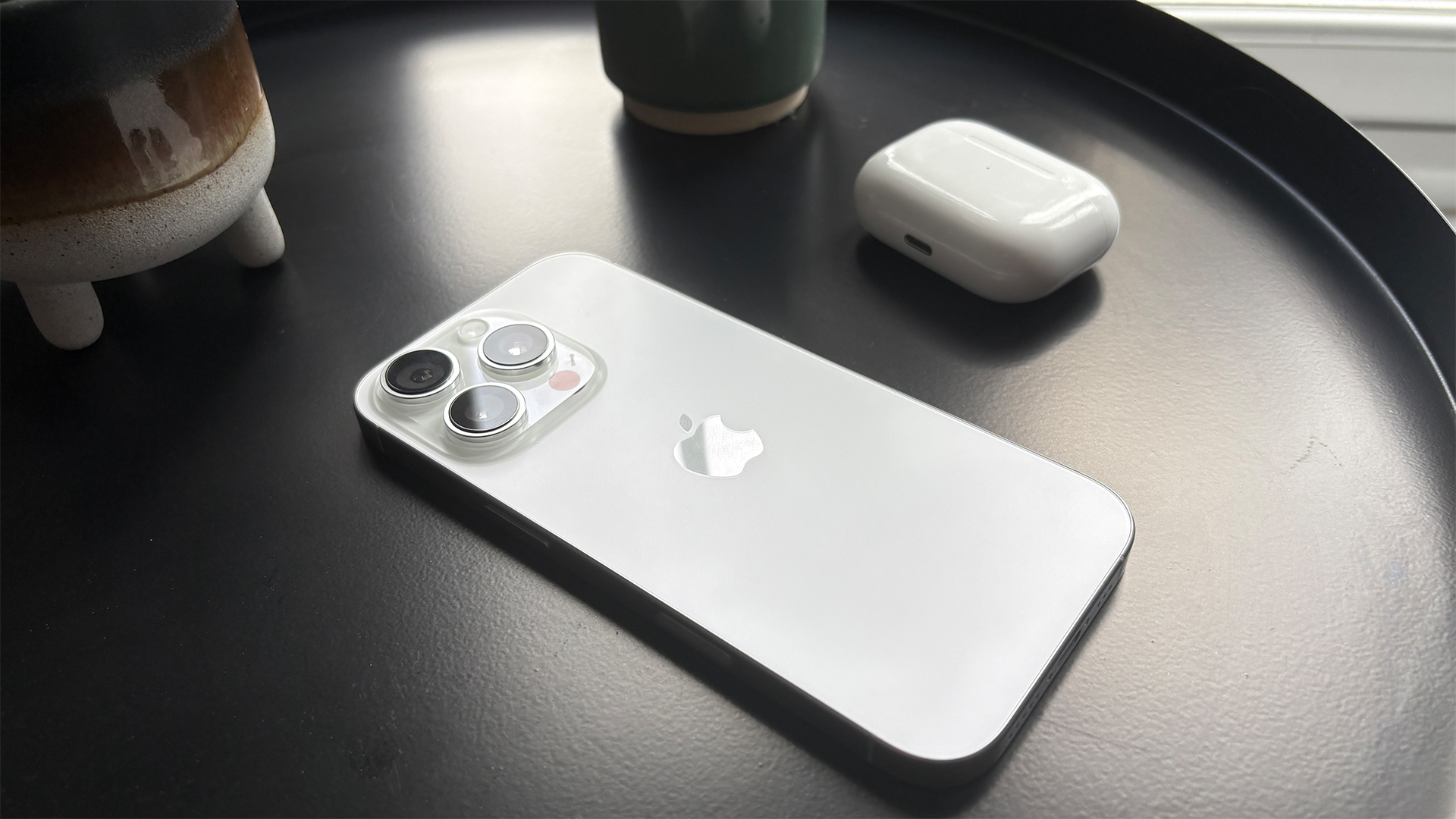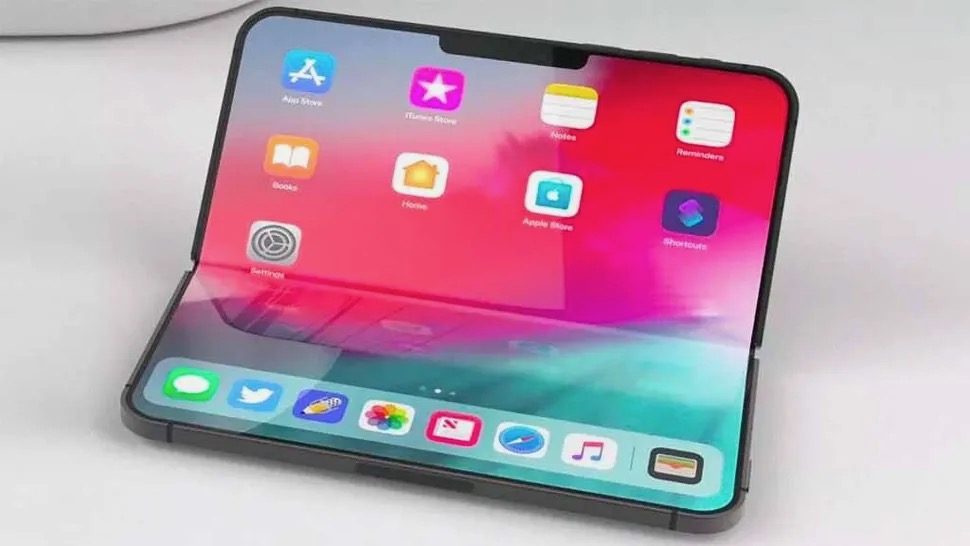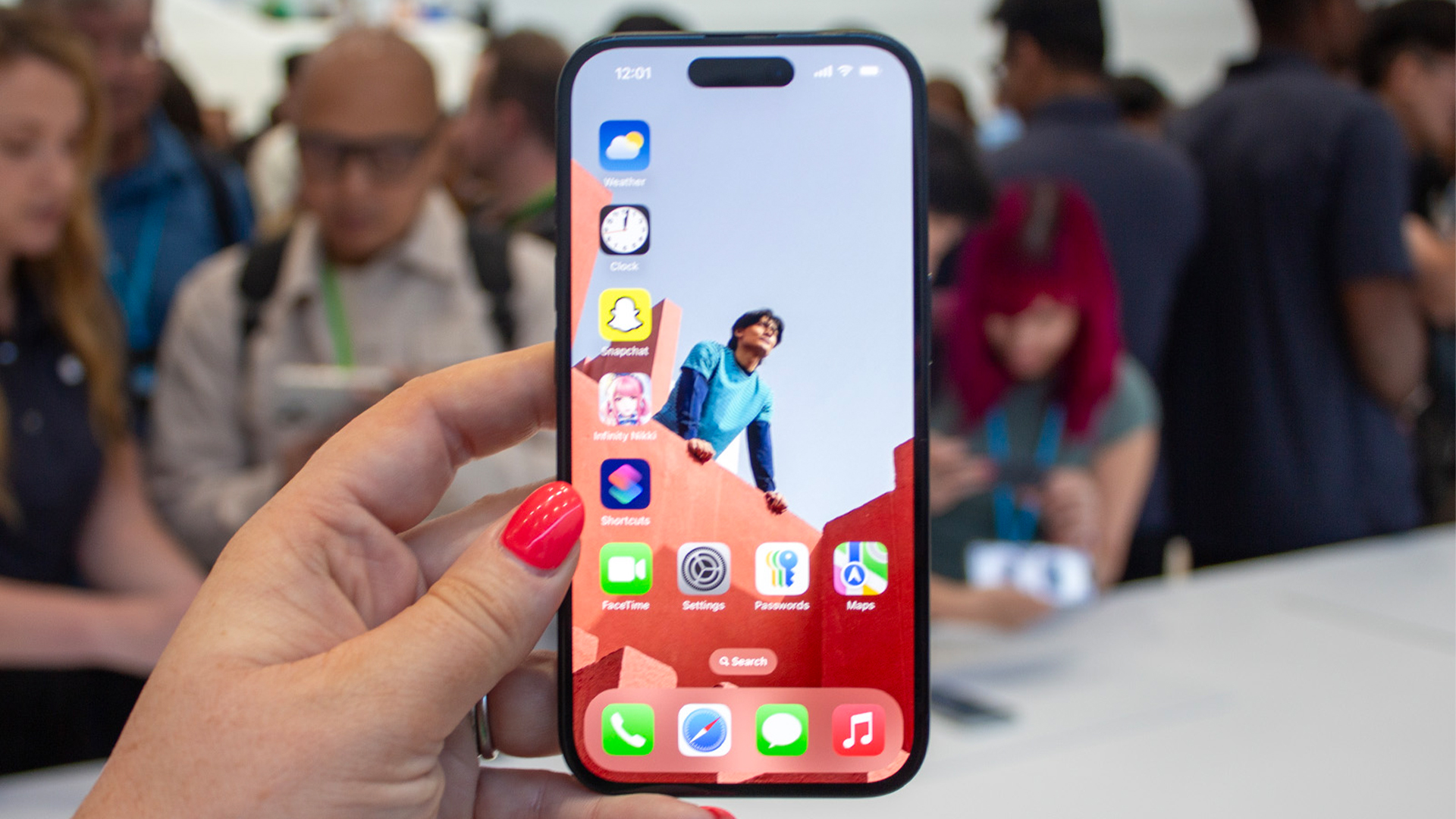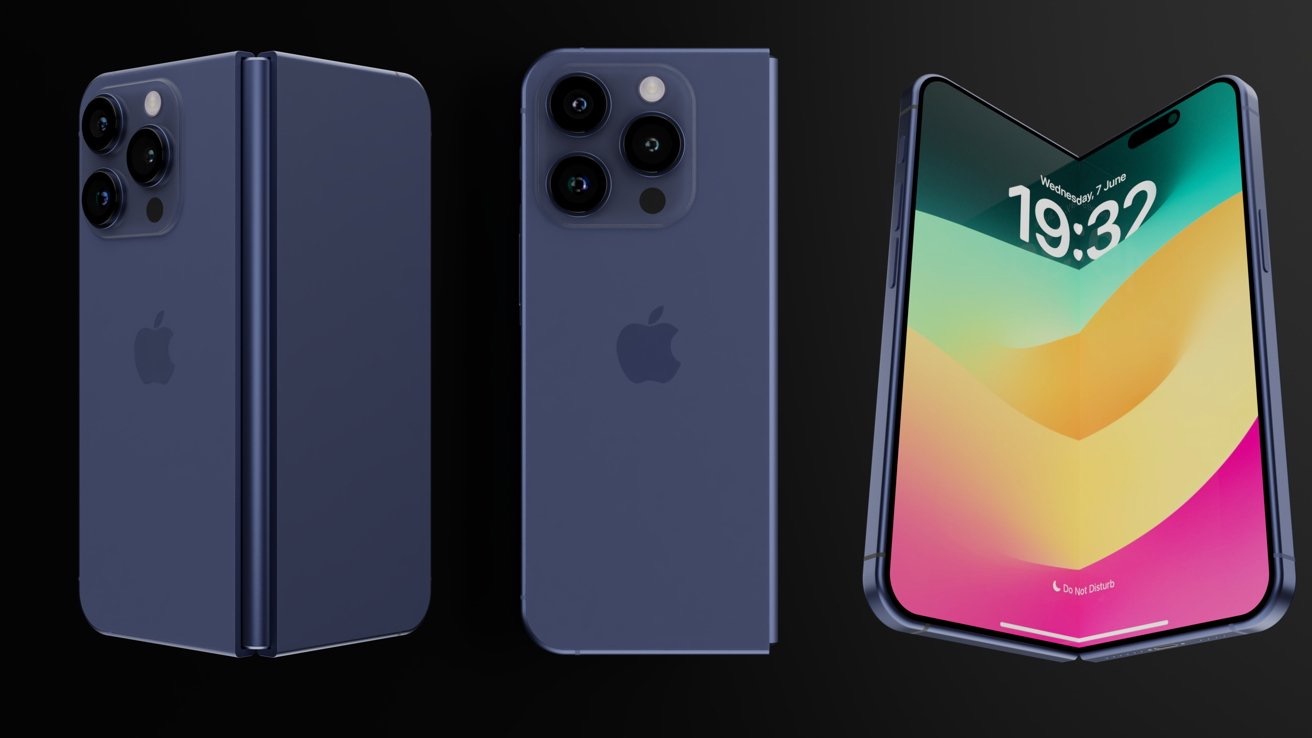Folding iPhone: design rumours, price leaks and everything we know so far
Could be landing in 2026

A foldable iPhone is the rumour that will not die, but maybe with good cause. Because while the device has been rumoured for the best part of a decade, now there are signs it could finally launch soon.
So what rumours are currently circulating? And how could Apple's first foldable stand out from the likes of the Samsung Galaxy Z Flip 6 and Google Pixel 9 Pro Fold?
Here's everything we know so far.
Folding iPhone: design rumours

Foldable phones come in two varieties: 'standard' foldables that open like a paperback book, and flip phones (like those from the early 2000s) that open like a make-up mirror. Samsung makes both: the Galaxy Z Fold 6 is the former, and the Z Flip 6 the latter.
Apple's foldable iPhone has been linked to both designs in the past, which doesn't help clarify which form factor the device will actually take. Early rumours said it would be a flip phone, while more recent rumblings concern a more standard foldable design.
We would expect the latter, as it would allow for a larger screen. Flip phones typically have smaller screens, whereas more standard foldables often open up to offer a display of around 7-8 inches across the diagonal. That's the equivalent of a small tablet.
With Apple's mobile OLED screens among the best in the business, we would expect it to use a standard foldable design in order to maximise screen real estate.
As for where that leaves the iPad Mini, it's anyone's guess...
Folding iPhone: launch rumours
A foldable iPhone has been rumoured for years, with many potential launch windows mooted. But recently more credible sources have been weighing in, with a consensus – of sorts – emerging.
If they're right, the foldable iPhone could launch as soon as next year.
Analyst Jeff Pu predicts (via 9to5Mac) that the foldable iPhone will launch in 2026 alongside a foldable iPad. This backed up a previous report by Bloomberg's Mark Gurman.
Pu and Gurman are two of the most reliable Apple analysts around. While some others predict we won't see Apple's foldable(s) until 2027, the fact that these two agree suggests we might see Apple enter the foldables arena sooner rather than later.
Folding iPhone: screen speculation

Ming-Chi Kuo is another of the most well-respected Apple analysts around, and in March 2025 he shared his predictions in a blog post on what a foldable iPhone will look like.
He reckons the device will have a "book-like" design, with a 5.5-inch exterior screen and a 7.8-inch display once opened up.
That external screen would be smaller than that of the iPhone 16 (which is 6.1 inches), and smaller than those of rivals the Samsung Galaxy Z Fold 6 (6.2 inches) and Google Pixel 9 Pro Fold (6.3 inches). Its folded out screen would be bigger than the Z Fold 6's (7.6 inches) but smaller than the Pixel 9 Pro Fold's (8 inches).
The screen crease proved problematic with the earliest foldables. Not only was it highly visible, but it even caused some early models to crack and break after some use. Thankfully these problems have been ironed out since, and are unlikely to appear in an Apple device – sometimes it pays not to be first to market.
According to a report from Business Korea, Apple will use a crease-free Samsung OLED panel in its foldable iPhone. Samsung has been making foldable screens for six years now, since the original Galaxy Fold launched in 2019. So it has plenty of expertise in this area.
We would expect a foldable iPhone to have the same 120Hz ProMotion display technology as the iPhone 16 Pro and Pro Max. This gives those phones double the maximum refresh rate of the 60Hz iPhone 16 and iPhone 16 Plus, meaning less blur during fast-moving games and movies.
Folding iPhone: potential specs

Lately, more details on the potential specs of the foldable iPhone have started to emerge.
In his extensive blog post, seasoned Apple watcher Ming-Chi Kuo predicts the foldable will be a "true AI-driven phone". Given the direction of travel in recent years across the smartphone sector as a whole, that's hardly surprising – even the entry-level iPhone 16e has artificial intelligence smarts.
"Multimodal functionality and cross-app integration are the trends in AI device use cases," he notes. "Larger screens enhance the AI experience, enabling scenarios like chatting with a chatbot about travel plans while viewing a full map app simultaneously."
Apple is keen to avoid a bulky device, and will reuse some of the technologies and techniques it will use in this year's ultra-thin iPhone 17 Air, according to Mark Gurman. Which would mean Apple's own compact C1 modem (also used in the iPhone 16e), no SIM card tray and high-density battery tech – though until the iPhone 17 Air is official, we won't know for sure that it has these features.
Kuo agrees that it will be a slim device. He reckons it will measure between 9mm and 9.5mm thick when folded, and between 4.5mm and 4.8mm when unfolded. That would make it a little thicker than the 7.8mm iPhone 16 when folded, but noticeably slimmer when unfolded. It would also make it much slimmer than the Samsung Galaxy Z Fold 6, which is 12.1mm thick when folded and 5.6mm when unfolded.
In terms of power, we can expect Apple's top processor at the time (presumably the A20, if the A19 debuts with the iPhone 17 this year).
It sounds like a very futuristic device, but in one regard it could take a bit of a step backwards. Kuo speculates that it will feature Touch ID on the side button instead of Face ID. He says Apple could leave out facial recognition tech because of space constraints within the device – if it can't slim down the front-facing TrueDepth camera module, it will leave it out altogether.
Folding iPhone: price rumours
The bad news is, it's going to cost you. Predictions vary, but they all agree on that.
Kuo pegs the price at around $2000 to $2500, while an analyst from Barclays Bank reckons it will cost $2300 (via MacRumors). Gurman's guess? "Around $2000."
For reference, the Samsung Galaxy Z Fold 6 costs £1799 / $1900 / AU$2737, and the Google Pixel 9 Pro Fold £1749 / $1799 / AU$2699. So if these rumours bear fruit, Apple's foldable would be pricier than its rivals.
Then that's hardly surprising. Apple's devices are premium through and through. Even its "budget" iPhone 16e starts at £599 / $599 / AU$999.
But would people really be willing to pay twice the price of an iPhone 16 Pro Max for a foldable iPhone? Some would, certainly, but in order to appeal beyond just the Apple diehards, the firm has to execute the phone brilliantly. It's certainly had long enough to work on it.
Folding iPhone: early verdict
There are a lot of moving parts to this story, so a lot can change. Indeed, a lot already has – this device was first mooted years ago, when foldables were in their infancy.
But the rumours are gathering pace, and with the most renowned industry watchers predicting a 2026 or 2027 launch, a folding iPhone could become real pretty soon.
Apple's rivals have a big head start, with Samsung, Google and OnePlus already producing solid foldable phones that have reviewed well. So Apple has a big challenge on its hands.
To succeed, it will have to make a compelling case for foldables, convincing more than just early adopters that the device is a must-have, not just a nice-to-have. But for us fans of movies on the move, a fold-out big screen – sprinkled with a bit of Apple magic – could make it the phone we've been waiting for.
We'll update this article as more rumours emerge.
MORE:
Check out the best iPhones around
And the best Android phones
Want to go bigger? These are the best tablets
Get the What Hi-Fi? Newsletter
The latest hi-fi, home cinema and tech news, reviews, buying advice and deals, direct to your inbox.
Joe has been writing about tech for 20 years, first on staff at T3 magazine, then in a freelance capacity for Stuff, The Sunday Times Travel Magazine (now defunct), Men's Health, GQ, The Mirror, Trusted Reviews, TechRadar and many more. His specialities include all things mobile, headphones and speakers that he can't justifying spending money on.
You must confirm your public display name before commenting
Please logout and then login again, you will then be prompted to enter your display name.
